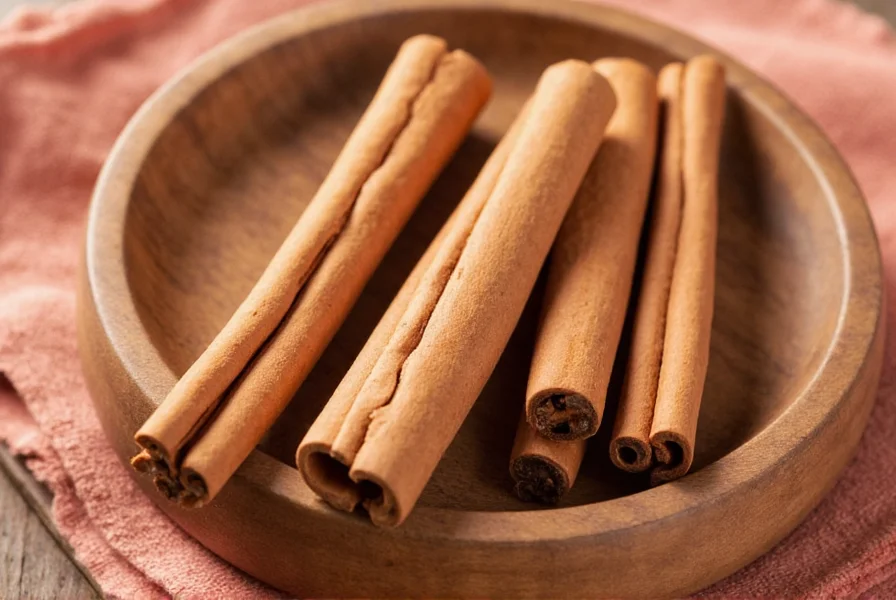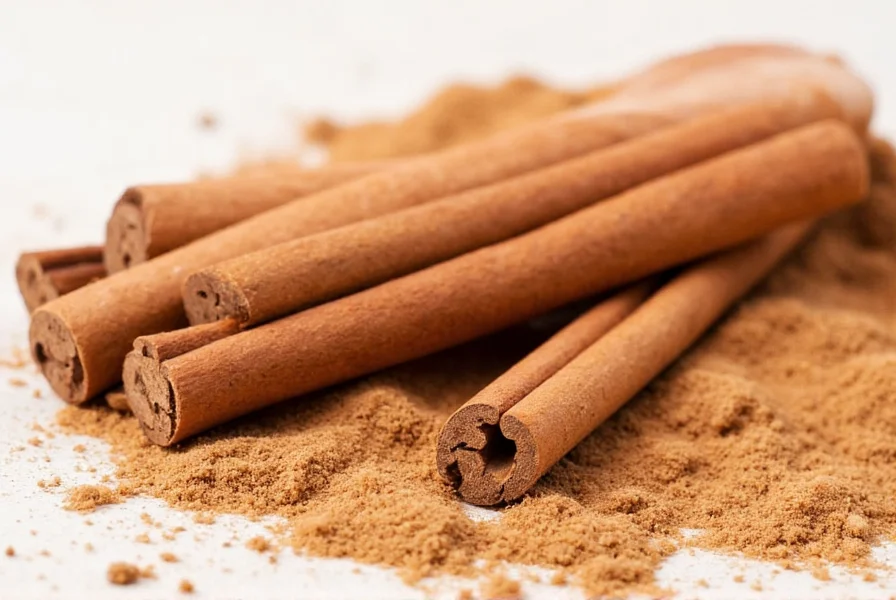When exploring the world of kinds of cinnamon, understanding the distinct varieties helps you make informed choices for cooking, baking, and health considerations. While many consumers think of cinnamon as a single spice, there are actually several different types harvested from various Cinnamomum tree species, each with unique characteristics that affect flavor, appearance, and even safety profile.
Ceylon Cinnamon: The True Cinnamon
Often labeled as “true cinnamon,” Ceylon cinnamon (Cinnamomum verum) originates from Sri Lanka and southern India. This premium variety features multiple thin, papery layers that form a delicate, hollow quill with a light brown color. When compared to other kinds of cinnamon, Ceylon offers a more subtle, citrusy-sweet flavor with complex floral notes rather than intense heat.
Ceylon cinnamon contains significantly lower levels of coumarin—a natural compound that can cause liver damage in high doses—making it the preferred choice for regular consumption, especially for children, pregnant women, or those with liver conditions. This variety works beautifully in delicate dishes like custards, fruit salads, and beverages where you want cinnamon flavor without overwhelming heat.

Cassia Cinnamon: The Common Variety
Most cinnamon sold in supermarkets across North America and Europe is actually Cassia cinnamon (Cinnamomum cassia), primarily grown in China and Indonesia. This type of cinnamon forms a single, thick, hard quill with a dark reddish-brown color and rough texture. Cassia delivers a stronger, more pungent flavor with noticeable heat that stands up well in robust recipes.
While Cassia contains higher levels of coumarin than Ceylon, moderate consumption (about 1 teaspoon or less daily) remains safe for most healthy adults. Its bold flavor makes it ideal for spice-heavy applications like cinnamon rolls, apple pie, and chai tea. When following recipes that simply call for “cinnamon,” Cassia is typically what the chef intended.
Saigon Cinnamon: The Flavor Powerhouse
Saigon cinnamon (Cinnamomum loureiroi), grown primarily in Vietnam, represents the most intense variety among the different kinds of cinnamon. Its thick, tightly rolled quills contain the highest concentration of essential oils, delivering exceptional sweetness balanced with significant heat. Professional bakers often prefer Saigon for its powerful flavor that holds up during cooking and baking.
This variety contains even higher coumarin levels than standard Cassia, so moderation is particularly important. Saigon cinnamon shines in recipes where cinnamon should be the star flavor—think snickerdoodles, cinnamon sugar, and spiced chocolate. Its robust profile makes it less suitable for delicate applications where subtlety is preferred.
Korintje Cinnamon: The Balanced Option
Korintje cinnamon (Cinnamomum burmannii), mainly produced in Indonesia, offers a middle ground between Cassia and Ceylon in both flavor and appearance. Its quills are thinner than Cassia but thicker than Ceylon, with a medium brown color and moderately strong flavor profile. Among the varieties of cinnamon, Korintje provides good sweetness with moderate heat and excellent solubility.
Commonly used in commercial food production, Korintje cinnamon works well in both sweet and savory applications. It contains coumarin levels similar to Cassia, so standard consumption guidelines apply. This versatile variety performs admirably in everything from breakfast cereals to barbecue rubs, making it a practical choice for everyday cooking.
| Type | Appearance | Flavor Profile | Coumarin Level | Best Culinary Uses |
|---|---|---|---|---|
| Ceylon | Multiple thin, papery layers; light brown | Delicate, citrusy, floral, mild sweetness | Very low | Desserts, beverages, delicate sauces |
| Cassia | Single thick layer; dark reddish-brown | Strong, pungent, noticeable heat | High | Baking, spice blends, robust recipes |
| Saigon | Very thick, tightly rolled; dark brown | Intensely sweet with significant heat | Very high | Cinnamon-forward recipes, spice mixes |
| Korintje | Moderate thickness; medium brown | Balanced sweetness with moderate heat | Moderate to high | Everyday cooking, commercial products |
How to Identify Different Cinnamon Types
Telling kinds of cinnamon apart requires attention to several physical characteristics. Ceylon cinnamon’s defining feature is its multiple thin layers that resemble a cigar when viewed from the end, while Cassia forms a single thick, hard tube. When broken, Ceylon snaps cleanly with a lighter color throughout, whereas Cassia tends to splinter and shows a darker interior.
Color provides another clue—Ceylon appears light tan to pale brown, while Cassia varieties range from medium to dark reddish-brown. The texture differs significantly too: Ceylon feels almost papery and crumbles easily between fingers, while Cassia remains hard and requires substantial force to break.
Health Considerations Across Cinnamon Varieties
Understanding the differences between cinnamon types becomes crucial when considering health implications. The primary concern involves coumarin content, which varies dramatically between varieties. Ceylon contains only trace amounts (about 0.017g per kg), while Cassia contains significantly more (approximately 63g per kg), and Saigon reaches even higher levels.
For healthy adults, the European Food Safety Authority recommends limiting coumarin intake to 0.1mg per kilogram of body weight daily. This translates to approximately 1 teaspoon of Cassia cinnamon for a 150-pound person. Those with liver conditions or taking certain medications should consult their healthcare provider about appropriate consumption levels. When seeking the healthiest type of cinnamon for regular use, Ceylon generally represents the safest option.
Choosing the Right Cinnamon for Your Needs
Selecting among the various kinds of cinnamon depends on your specific application and health considerations. For everyday use, especially with children or for therapeutic purposes, Ceylon cinnamon provides the safest profile. Its delicate flavor works particularly well in dishes where you want cinnamon notes without overwhelming heat.
When baking robust treats like cinnamon rolls or apple pie, Cassia or Saigon cinnamon delivers the bold flavor most people associate with traditional cinnamon recipes. For commercial applications or everyday cooking where cost matters, Korintje offers a practical balance of flavor and affordability. Reading labels carefully helps identify which type of cinnamon you're purchasing, as many products simply say “cinnamon” without specifying the variety.
Frequently Asked Questions
What's the difference between Ceylon and Cassia cinnamon?
Ceylon cinnamon has multiple thin, papery layers forming a delicate quill with a light brown color and subtle, citrusy flavor. It contains very low coumarin levels. Cassia cinnamon forms a single thick, hard quill with dark reddish-brown color and stronger, more pungent flavor with noticeable heat. Cassia contains significantly higher coumarin levels than Ceylon.
Which type of cinnamon is healthiest?
Ceylon cinnamon is generally considered the healthiest option due to its very low coumarin content. Coumarin, found in higher concentrations in Cassia varieties, can cause liver damage when consumed in large amounts over time. For regular consumption or therapeutic use, Ceylon provides the safety advantage while still delivering beneficial compounds like cinnamaldehyde.
Can I substitute Ceylon cinnamon for regular cinnamon in recipes?
Yes, but you may need to adjust the quantity. Ceylon cinnamon has a more delicate flavor than Cassia (regular supermarket cinnamon), so you might need to use 25-50% more Ceylon to achieve the same flavor intensity. In recipes where cinnamon is a featured flavor (like cinnamon rolls), this substitution may require experimentation. For subtle applications like oatmeal or coffee, Ceylon works as a direct 1:1 substitute.
How can I tell what kind of cinnamon I have?
Examine the physical characteristics: Ceylon forms multiple thin layers like a cigar and snaps cleanly when broken, with light tan color throughout. Cassia forms a single thick, hard tube that splinters when broken and shows darker interior. Ceylon feels papery and crumbles easily, while Cassia remains hard. Reading product labels carefully is the most reliable method, as some products specify “Ceylon” while others simply say “cinnamon” (typically meaning Cassia).











 浙公网安备
33010002000092号
浙公网安备
33010002000092号 浙B2-20120091-4
浙B2-20120091-4